Super Puma crash: Helicopter 'showed warning light'
- Published
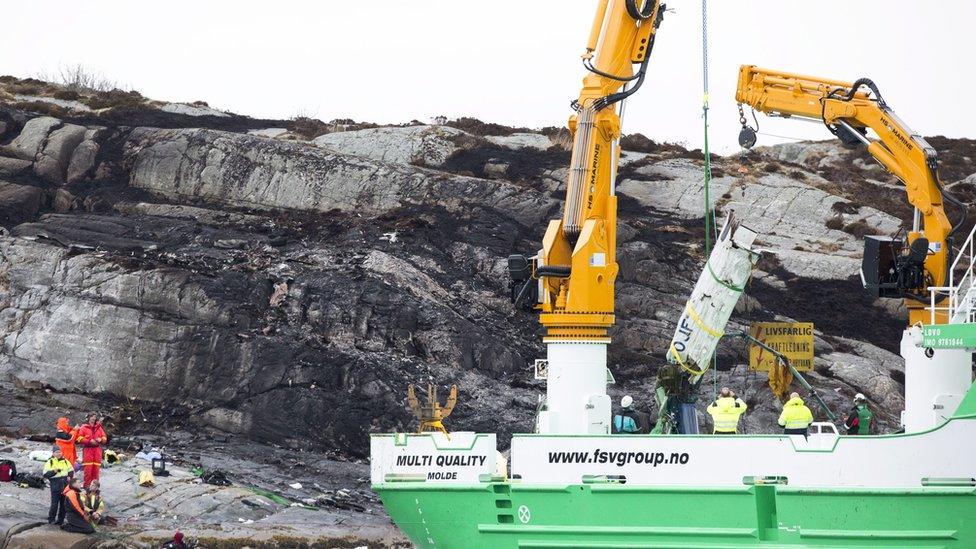
The helicopter was flying from the Gullfaks oil field to Bergen when it crashed
A helicopter which crashed in Norway killing 13 people had been forced to land days before over fears of a technical problem.
A warning light came on in the cockpit of the helicopter just a few minutes into a flight to an offshore platform last Tuesday.
The Airbus EC225LP "Super Puma" crashed near Bergen on Friday.
A Scottish man killed in the crash has been confirmed as 41-year-old oil worker Iain Stuart.
Mr Stuart, from Laurencekirk in Aberdeenshire, worked for the oil field services company Halliburton.
In a statement, his family said they were "devastated" at his loss.
"Iain was a loving husband and devoted father to his two children and as a family we are heartbroken. He was a caring son, brother, uncle and friend to many," they said.
"We are appreciative of all the messages of support and kind thoughts."
"We now ask, as a family, that we are allowed some privacy at this difficult and sad time to grieve and come to terms with our loss."
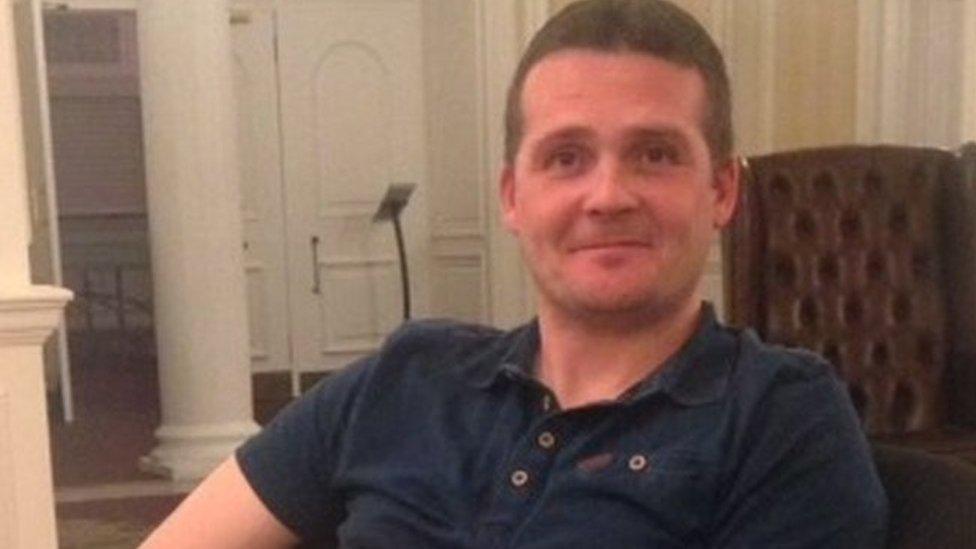
Iain Stuart was one of 13 victims of the crash
The aircraft's operator CHC confirmed the helicopter returned to Flesland, Norway, on Tuesday after a warning light came on.
A part was replaced, but the warning light reappeared during a test flight the following day. Another component was changed and a second test flight was completed without a warning light.
According to CHC, none of the changed parts was "physically connected" to the rotor or gearbox.
A spokeswoman for the company said: "These Returns to Base (RTBs) are essential for flight safety and part of operating in a highly regulated industry.
"Sometimes an RTB can be for technical issues, other times it is much more mundane. At all times, CHC has met or exceeded the requirements of our regulatory authorities and our customers, and continues to offer a compliant service.
"Speculation about the cause of the accident is unhelpful and we must also be careful to respect the feelings of the families who perished in the tragic events of Bergen."
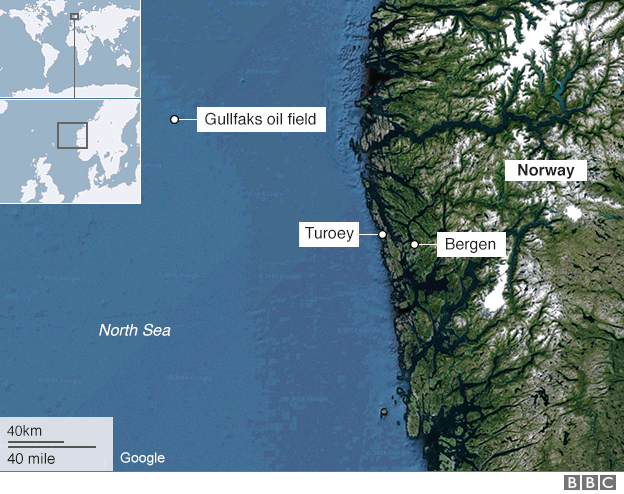
Commercial flights by the helicopter in the UK have been grounded by the Civil Aviation Authority (CAA).
A team from the UK's Air Accidents Investigation Branch has gone to the crash site to help with the investigation.
A petition to remove the EC225 Super Puma helicopter from services, started by an oil worker following the crash, has now been signed by more than 5,000 people, external - some of them relatives of those killed in other incidents.
The petition calls on the CAA to "revoke the air worthiness certificates for this aircraft", claiming that failure to do this could result in "more needless deaths".
Commenting on the petition, the mother of 27-year-old oil rig worker Stuart Wood, external who died in a Super Puma crash in 2009, said all versions of the helicopter should be withdrawn.
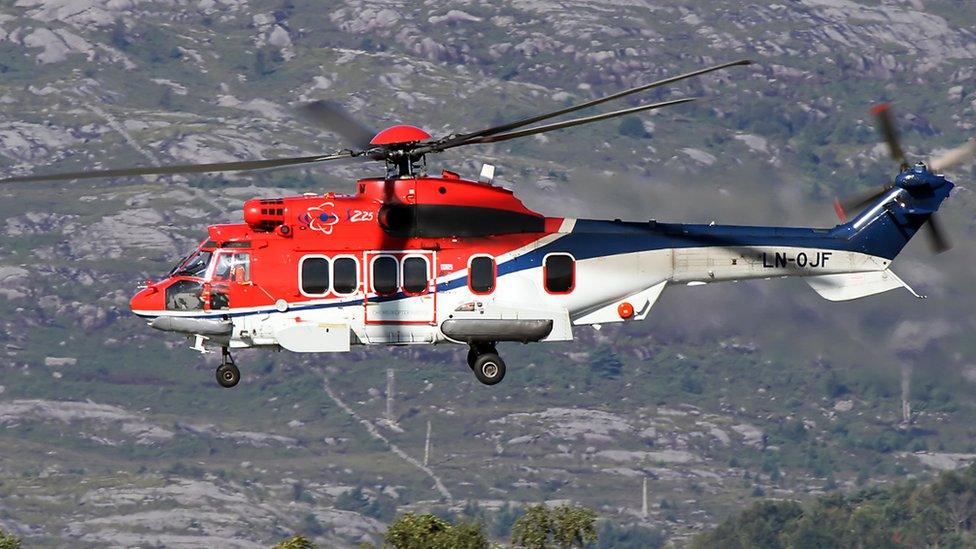
The Super Puma helicopter which crashed off Norway
Audrey Wood, from Newmacher, Aberdeenshire, said, external: "Seven years on and my life has stood still. Wouldn't wish this heartache on my worst enemy.
"All variants of Puma should be removed from the oil industry, men should feel safe travelling to work not fear if they will ever see their loved ones at home again."
The helicopter in the latest crash was flying from the Gullfaks oil field to Bergen, a centre for the North Sea oil and gas industry, when it crashed near the small island of Turoey.
A major rescue operation was launched but ended within hours of the crash. Mr Stuart was a passenger on the aircraft along with 11 Norwegians and an Italian.
The British Airlines Pilots Association (Balpa) said the "ripples" of the crash would spread far beyond Norway - a country with a "good safety record".
Gearbox problems
Balpa's general secretary, Jim McAuslan, said: "The worldwide helicopter pilot community is united in demanding that we get to the bottom of what caused this latest accident in the North Sea and what can be learned from it."
Mr McAuslan added the association would do all it could to help with the investigation into the Norway crash.
In 2012, two EC225 Super Puma helicopters ditched into the North Sea in Scotland - one off Aberdeen and another off Shetland. Both incidents were blamed on gearbox problems and all passengers and crew were rescued.
EC225s in the UK were grounded following the incidents but given the go-ahead to resume flying in August 2013.
Later that same month a different model of Super Puma, the AS332 L2, crashed off Shetland, killing four people.
Super Pumas are responsible for many of the 140,000 helicopter passenger flights in the UK each year.
- Published30 April 2016
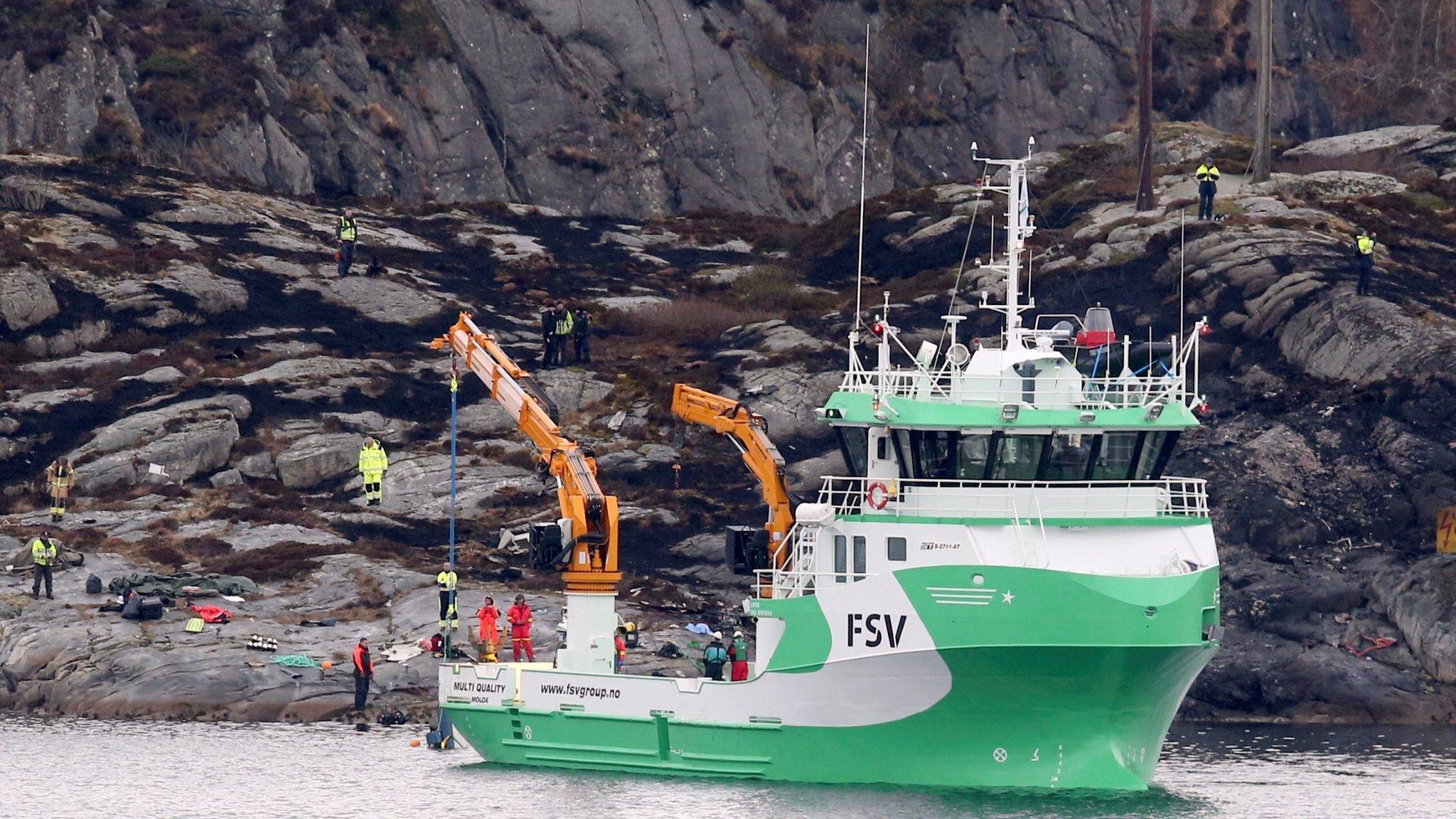
- Published30 April 2016

- Published29 April 2016
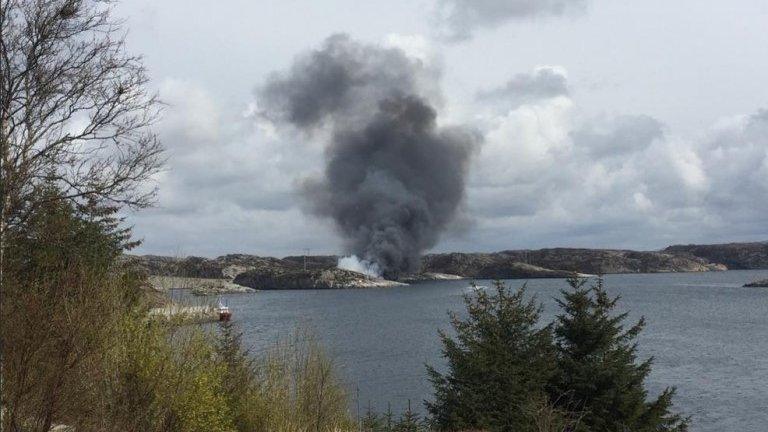
- Published29 April 2016
